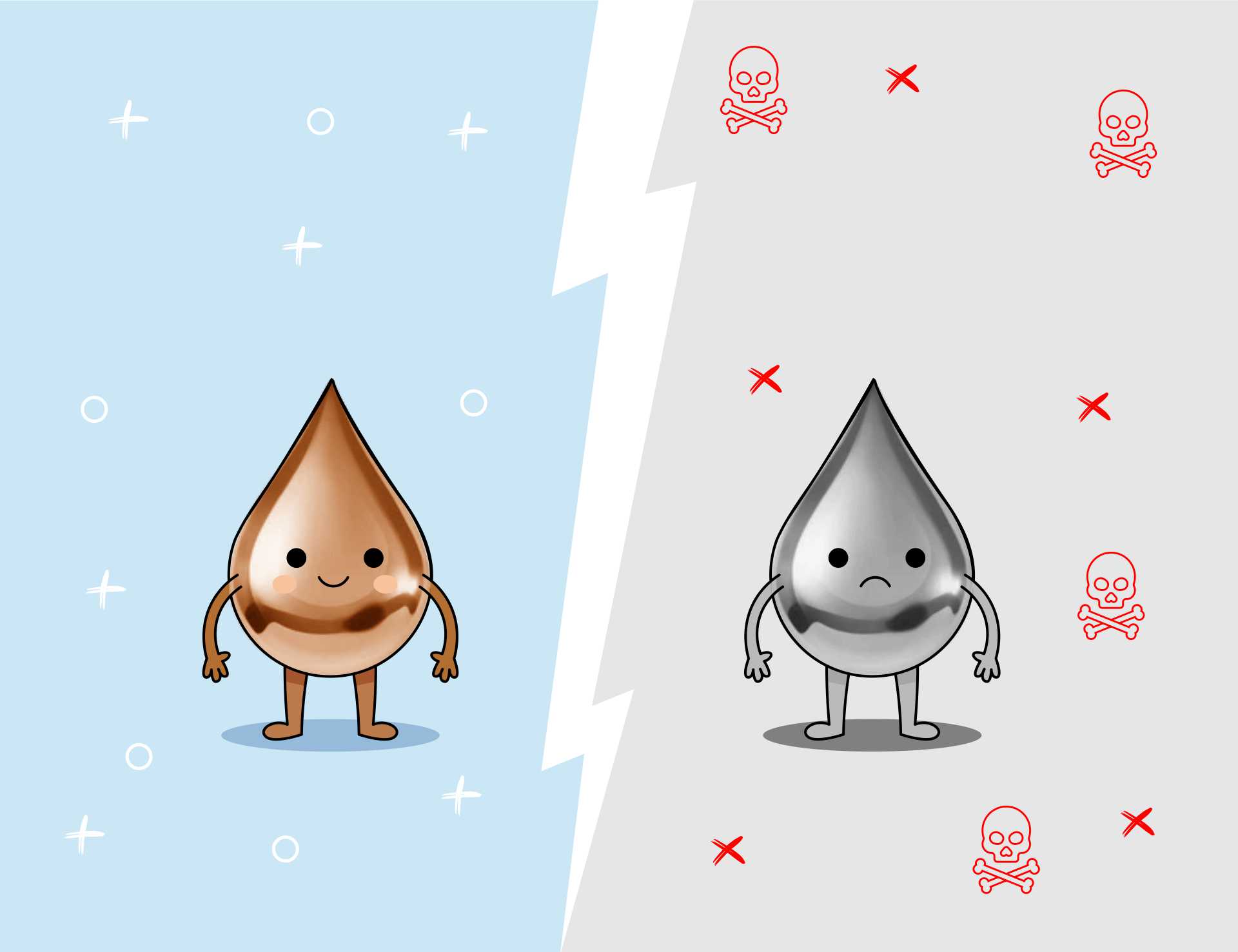Copper is an integral component of electron transport and, therefore, a part of the human energy supply. Therefore, copper deficiency can play a role in any number of diseases or symptoms. But what are the tangible processes where copper deficiency can be detected?
Graying
The most visible sign of copper deficiency in the body is the appearance of grey hair strands. Few could experience this phenomenon positively, but it has a beneficial side. Greying indicates an early stage of copper deficiency. The body very intelligently prioritizes its copper resources, so essential life functions take precedence over the perpetual youth of hair colour.
The process has many different facets. The most commonly known are genetic, nutrient deficiency, and enzyme deficiency greying. Still, there are also oxidative, toxicological, immunological, autoimmune, and stress-induced mechanisms. Copper is an important player in each of these!
The role of genes is increasingly receding. More and more practical experiences suggest that the phenomenon is predominantly epigenetic. It means that predisposing genes are activated only by certain environmental factors. All in all, greying is rarely a matter of fate (e.g., Hermansky-Pudlak syndrome).
The Causes of Graying
The hair and skin colour are due to melanin produced in melanocytes. The process involves an essential step activated by a copper-dependent enzyme called tyrosinase. During this multi-step process, a companion protein known as ATP7A plays a role by inserting copper into the right place, thus activating the enzyme. However, if there is nothing to work from, the process stalls.
What causes a decrease in copper or makes it less available?
- Oxidative Stress:
Reactive oxidative byproducts disrupt iron metabolism, directly affecting the body’s available copper supply. Copper supplementation can address this in multiple ways. It improves hematopoiesis; thereby, iron metabolism and numerous copper-dependent proteins also play a role in the body’s antioxidant system (GSH, SOD, CP, Catalase).
- Immune Processes:
In some severe pathological conditions, the immune system redistributes copper to bolster stronger immune activity (e.g., neutrophil granulocytes), leaving insufficient copper for melanosome function.
- Autoimmunity:
Certain autoimmune processes (e.g., vitiligo) can attack melanocytes, thus impeding melanin synthesis. Case reports suggest that the process can be slowed down with copper intake.
- Toxic Burden:
Heavy metals induce greying in multiple ways. They hinder the formation of copper-dependent enzymes and increase the elimination of copper from the body. Toxic metal load can be controlled by increased copper intake in certain cases. The physiological metallo-enzymes responsible for heavy metal excretion from the body are also synthesized in the presence of copper.
- Stress & Energy Deficiency:
Both acute and chronic stress imposes a heavy burden on copper metabolism through different mechanisms. The synthesis of stress hormones is a copper-dependent process, so the body produces more during stressful times. Moreover, the increased energy demand (ATP production) induced by stress also utilizes copper.
For example:
- Sudden and early greying can be attributed to severe stress.
- Copper levels also significantly decrease in the blood of those who undergo endurance tests.
Is Graying Reversible?
Greying associated with a copper deficiency in the body can be relatively effectively addressed with deliberate copper supplementation. However, the real solution goes beyond purchasing a copper product. When integrated into a conscious protocol and monitoring symptoms, it can yield good results.
For more articles on Copper Supplementation, click HERE.





